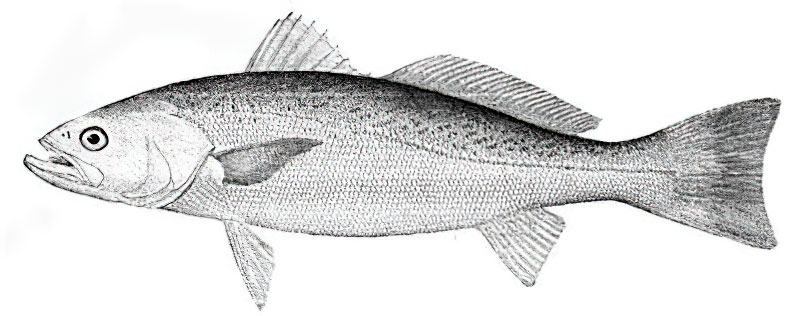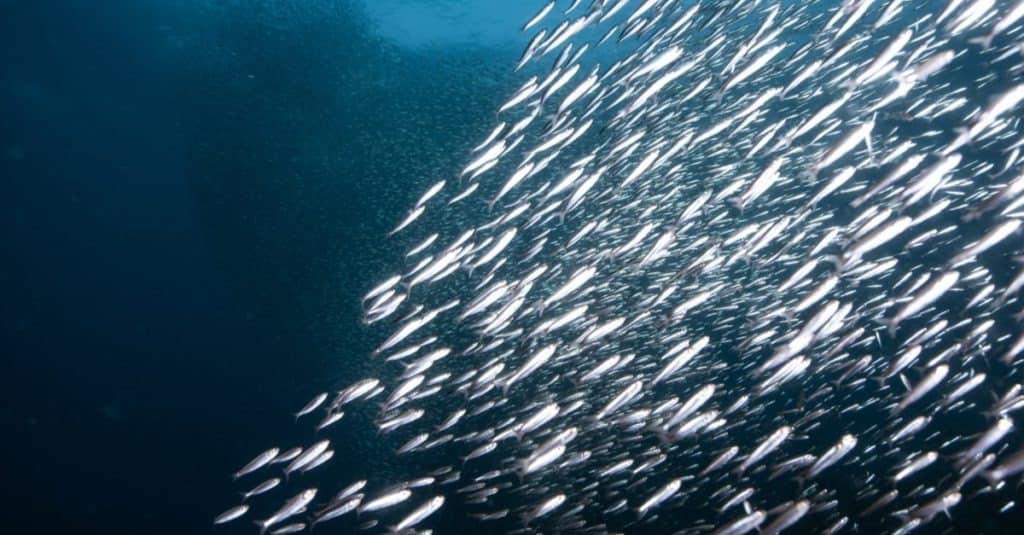Delaware may be a small state, but it has a big claim to fame when it comes to its official state fish. In fact, Delaware is one of the states in the country that has designated an official fish, and if you’re curious about what that fish might be, you’ve come to the right place. From its habitat and appearance to its historical significance and cultural connections, we’ll explore everything you need to know about this fascinating aquatic creature and why it holds such a special place in the hearts of Delawareans. So sit back, relax, and get ready to dive into the world of Delaware’s state fish!
About Delaware

Delaware has several state animals, including an official state fish of Delaware.
©Tetyana Ohare/Shutterstock.com
Delaware, located in the Mid-Atlantic region of the United States, is known as “The First State” because it was the first state to ratify the Constitution. The state’s economy is largely based on healthcare and social assistance services, finance and insurance industries, as well as manufacturing.
In terms of geography, Delaware has a total area of 1,982 square miles and stretches just 96 miles from north to south. It borders Maryland to the south and west, Pennsylvania to the north, and New Jersey to the east across Delaware Bay.
Despite its small size, Delaware has played a significant role in American history and culture. The state was one of the original 13 colonies and served as the first state to ratify the U.S. Constitution. Its location on the East Coast also made it an important hub for trade and commerce during colonial times.
Today, Delaware’s economy is thriving thanks to its business-friendly policies and strategic location between major cities like New York City and Washington D.C. Major industries in the state include banking, healthcare, pharmaceuticals, and agriculture.
Delaware also boasts a rich cultural scene with world-class museums such as Winterthur Museum, Garden & Library, and Hagley Museum & Library showcasing its history dating back to colonial times. Additionally, Wilmington’s Riverfront District offers a vibrant arts community with galleries, theaters, restaurants, and nightlife options for visitors to explore.
The State Fish of Delaware

Weakfish have square-shaped tails.
©Northeast Fisheries Science Center, Fisheries Service, National Oceanic and Atmospheric Administration; uploaded by Gdr / public domain – Original / License
The weakfish (Cynoscion regalis) has been designated as the official state fish of Delaware since 1981 in recognition of sport fishing’s significant contributions to the state’s recreational and economic industries. This particular species is highly valued by anglers for its fighting ability and delicious taste. Additionally, weakfish are an important component of marine ecosystems in Delaware waters, serving as both predators and prey in food chains.
Also known by several other names such as sea trout, chickwick, yellow fin trout, yellow mouth, squeteague, and gray sea trout, this fish can be found along the Atlantic coast from Massachusetts to Florida during different seasons throughout the year. The weakfish is a popular target for both commercial fishermen as well as recreational anglers who engage in catch-and-release or keep them for consumption purposes. Overall, it is clear that this species holds a special place not only within Delaware but also among those who enjoy fishing along the east coast of North America.

Catching Weakfish
If you’re looking to catch weakfish in Delaware, it’s important to know the rules and regulations. While it is legal to fish for them, there are both size and catch limits that need to be adhered to. You can find these guidelines on the official website of the Delaware Department of Natural Resources and Environmental Control.
When it comes time to actually catching these elusive fish, keep in mind that adult weakfish tend to swim within ten miles of shore along the coastlines. You can find them residing in both estuarine habitats as well as nearshore Atlantic Ocean waters.
While they may not be the easiest fish species to target, many anglers find great enjoyment in trying their hand at catching these prized game fish. But remember, always practice responsible fishing practices by following local laws and regulations regarding size limits and catch limits when targeting this or any other type of fish species.
What Bait to Use When Catching the State Fish of Delaware

Weakfish tend to stay around 10 miles from the shoreline.
©iStock.com/ymn
The state fish of Delaware, the weakfish, is a unique species with several interesting characteristics. The name “Weakfish” comes from the tender and easily-torn membrane in its mouth. This feature has made them a popular bait for fishermen since they are not able to hook onto it very easily. Additionally, this fish has an upper jaw that contains large canine-like teeth, which add to its distinctive appearance.
When it comes to luring weakfish, there are many effective techniques that anglers use. Artificial lures such as bucktails tipped with rubber worms have proven successful in attracting these fish. Additionally, squid strips and pieces of peeler crabs fished on bottom rigs are successful with experienced fishermen.
Although weakfish can be found at various sizes throughout their range, when caught by Delaware anglers, they typically fall within the 10-15 inch range. Despite their smaller size compared to other game fish, catching weakfish remains an exciting experience due to their elusive nature and striking appearance.
Cynoscion regalis are known to be quite picky. As such, they are a difficult type of fish to catch when angling recreationally. These fish prefer water temperatures in the range of 50-65°F, making this the ideal time to aim for them since they are most active while breeding within these temperatures.
Overall, whether you’re an experienced angler or just starting out in the sport of fishing, targeting weakfish is definitely worth considering if you find yourself near Delaware’s coastlines or estuaries!
Weakfish Diet

Anchovies
are one of the main food sources of Delaware’s state fish.
©Divefriday/Shutterstock.com
The weakfish, also known as the Cynoscion regalis, is a predatory fish that preys on a wide variety of species. They are commonly found in the waters off the coast of Delaware and are so popular that they are the official state fish.
One of their primary food sources is small schooling fish like anchovies and Atlantic Menhaden. These tiny fish make up a large portion of the weakfish’s diet, and they use their keen senses to locate them. Once they spot their prey, they move towards them slowly before attacking aggressively with an open jaw.
In addition to small fish, weakfish also feed on assorted crabs, shrimp, mollusks, and even large zooplankton. This varied diet allows them to adapt to changing conditions in their environment and ensures that they always have enough food to sustain themselves.
Although being a predatory fish and on a higher trophic level than some other marine animals like crustaceans or plankton-eating fishes, weakfish are not immune from becoming someone else’s meal. In fact, larger predators such as bluefish, striped bass, and dusky sharks often prey upon these tasty delicacies when given a chance.
Despite this vulnerability to predation by larger creatures in its ecosystem, it has managed to survive through conservation efforts put forth by various organizations, including the NOAA Fisheries Service, which recognizes it as one of many important components within our nation’s fisheries resources.
Reproduction
The weakfish, Delaware’s official state fish, have a unique reproductive cycle that starts in April and lasts until August. During this time, they reproduce in the shallow estuary waters, where their offspring form zooplankton. These young ones are then carried by tidal currents until they reach rivers with low salinity.
As the fish grow, they begin their journey back to the saltier waters where they were born. This migration usually takes place during winter when these species move from the intertidal bay zone to deeper offshore waters. Interestingly, male weakfish possess an ability to produce a deep croaking sound which is very common among species belonging to the drum family. This trait is often used for mating purposes as it helps males attract females of their own kind.
Overall, studying the reproduction of weakfish provides valuable insights into how these creatures survive and thrive in different environments.
The photo featured at the top of this post is © Northeast Fisheries Science Center, Fisheries Service, National Oceanic and Atmospheric Administration; uploaded by Gdr / public domain – License / Original
Thank you for reading! Have some feedback for us? Contact the AZ Animals editorial team.







